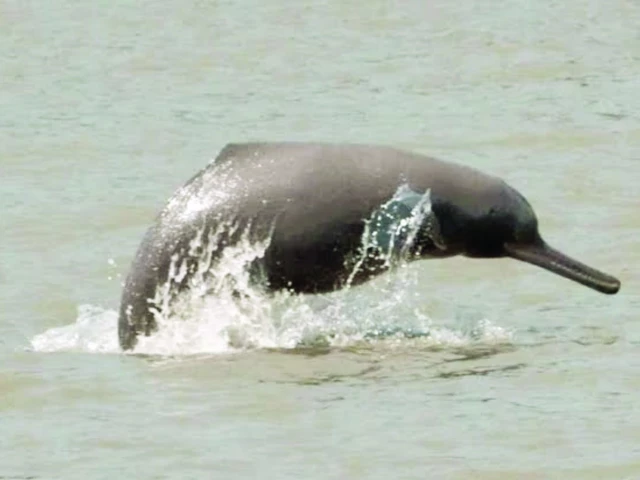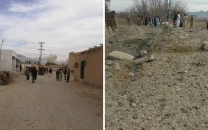Blind dolphin fighting for survival
The Indus blind dolphin, scientifically distinct from its Indian cousin in the Ganges River, evolved over millennia

The endangered Indus River blind dolphin, a freshwater species found only in Pakistan, continues to face threats to its existence. Pollution from sewage, fertilisers, pesticides, industrial waste, and harmful fishing practices are among the causes imperilling this exotic aquatic mammal.
Categorised as endangered on the International Union for Conservation of Nature (IUCN) Red List, the Indus blind dolphin has been the subject of several population surveys. In 1992, only about 500 dolphins were recorded in the Indus River. However, their number had risen to around 2,000 by 2017, thanks to conservation efforts. Their survival remains threatened, with human activities and habitat destruction posing ongoing risks.
The Indus blind dolphin, scientifically distinct from its Indian cousin in the Ganges River, evolved over millennia to adapt to its muddy river environment, losing its eyesight in the process. Despite being blind, it relies on echolocation to swim and hunt, possessing a long, saw-like snout equipped with small teeth. However, dams and barrages built along the Indus have fragmented its natural habitat, restricting its movement and breeding.
Fishing nets also pose a grave threat, as blind dolphins often become entangled while pursuing fish trapped in these nets. Moreover, some dolphins have tragically been killed due to human carelessness - such as during attempts to capture selfies - leading to legal action against offenders.
Local myths further complicate conservation efforts; some villagers near the Indus River believe the dolphin was once a mermaid that morphed into a fish.
The World Wildlife Fund (WWF) Pakistan has been spearheading efforts to protect this species.
Tawheed Ghani Mehsar, WWF's Manager, stressed the need for widespread awareness among fishing communities and the use of modern technologies like "pingers." These devices emit sounds that deter dolphins from approaching fishing nets, reducing accidental entanglements.
In a groundbreaking effort, three Indus dolphins were tagged with satellite transmitters in early 2022, providing valuable data about their movements and habitats. Over the past two decades, around 300 stranded dolphins have been safely rescued and released back into the river. This process involves transporting dolphins by road, ensuring constant water placement to keep them alive during the journey.
Despite a privately funded dolphin conservation program, more initiatives and policies are needed. Imran Malik, WWF Coordinator, highlights that pesticides, industrial pollutants, and illegal fishing nets must be addressed through strict enforcement of laws. Apart from that, expanding the use of pingers at canal gates and conducting educational campaigns can help reduce mortality rates. The Indus blind dolphin is not just a national treasure but also a vital part of Pakistan's ecological heritage. Its survival depends on continued conservation efforts, technological innovation, and widespread public awareness.


















COMMENTS
Comments are moderated and generally will be posted if they are on-topic and not abusive.
For more information, please see our Comments FAQ